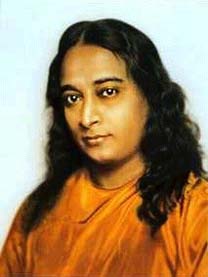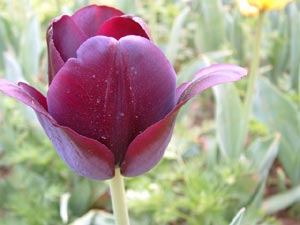Uncategorized

“Autobiography of a Yogi” by Paramahansa Yogananada is one of the greatest spiritual books. His autobiography of a Yogi has inspired countless people to take up mediation and the spiritual life. The book exudes a spiritual consciousness and is a fascinating glimpse into the life of a real genuine Yogi. The book tells the own spiritual journey of Yogananda from an aspiring seeker in India to his spiritual mission in the West.
Since Yogananda’s arrival in America many Westerners have been introduced to Kriya Yoga meditation.
One day, while working on his autobiography, Guru told us: “When I have left this world, this book will change the lives of millions. It will be my messenger when I am gone.”
from SRF
In 1999, a Buddhist monk moved to Canada and has since discovered something “shocking” about people in this country.
 “Kids haven’t been taught to use their hearts,” said venerable Sam Uttho.
“Kids haven’t been taught to use their hearts,” said venerable Sam Uttho.
Compassion can be found and maintained through the act of meditation, he said, and it does not have to be a religious practice – which is an aspect that usually deters people from meditation.
Uttho, a Thailand native, said curiosity brought him to Canada where he has learned the human mind is truly universal and that meditation is something from which anyone can benefit.
Science has dominance over the Western mind, Uttho added, and science rejects spirituality. Meditation, he said, is a way to find compassion, love, trust and respect within a person’s mind and body.
“You can’t remove emotion from human beings, but science removes everything,” he said.
Studies have also found that through meditation, positive energies can be created to reduce stress, improve immune systems, encourage creativity and heal many chronic pains, Uttho said.
“Material science cannot explain everything,” he said. “People (have) ignored the mind for many years.”
Uttho holds meditation sessions from Tuesday to Friday at 7 p.m. at the office of Dr. Francesco Anello, 401 Laurel St.
Raymond Murphy, a marital arts instructor at the YMCA, said he included meditation in his classes after experiencing its benefits first hand.
“We can learn from different cultures,” Murphy said. “We carry too much of a burden.”
Last year, Murphy spent six weeks in Thailand with Uttho, along with a group of Buddhist monks, where meditations were led by Master Thong Bai. Uttho said Bai is the best meditation master in all of Thailand.
“It was a beautiful experience,” Murphy said. “I saw so many smiles.”
Murphy said they spent hours meditating every day, but he would not join in the daily prayers with the monks because he does not practice the Buddhist religion.
“It’s not a religious thing,” he said. “To the monks it is, but it can be a spiritual thing.”Although Murphy’s martial arts classes are over for the year, he said he will incorporate more meditation next year and hopes to have a family class as well.
Meditation is something anyone can do at home as well, Murphy added, and anywhere from 10 minutes to an hour can help calm the mind.
“Even to get away from the TV for an hour,” Murphy added.
During his martial arts classes, Murphy said one of the biggest reasons he likes using meditation is so people become more aware of the decisions they make. Anything from settling confrontations to just feeling more relaxed is helped with meditation, he said.
“We learn how to hurt people in a thousand ways, but it only takes one smile to make things work,” Murphy said.
Also, he added, meditation can encourage self-respect and respect of others, trust and compassion. True happiness can only come from within.
Buddha once said, “We are what we think. All that we are arises with our thoughts. With our thoughts, we make our world.”
From: Cambridge Town News, Ontario, Canada
The most common question asked when giving meditation classes is “How to quieten the Mind”. Often people realise how busy the mind is.
I suggest we shouldn’t expect to be able to stop thoughts straightaway. THe mind is so used to thinking it takes a while for it to learn a completely new approach. 
This is an answer by Sri Chinmoy to a question “What do I do when bothered by thought in my meditations?”
Firstly persevere. This is the most common problem in the beginning because we use the mind constantly in our daily affairs. The mind can resist, it is very powerful and stubborn, but your determination and patience shall overcome these early difficulties. The soul has infinitely more capacities than the mind. The mind’s activities are only shallow, whereas the soul’s stillness lies within a much deeper and vaster reality. ..
We have to give the soul time to illumine the mind. The soul brings its qualities forward through the spiritual heart. That is why we focus on the heart in our meditation exercises. The spiritual heart is the vessel through which the soul offers its illumining, pure and divine qualities to the mind and body.
From: Meditation by Sri Chinmoy
Comments
2006-11-07 08:59 | Posted by tom useful advice thanks
My Lord,
When I most intensely pray and meditate,
The world badly misunderstands me.
My Lord, what shall I do?
“My child, you have only one world,
And that world is all love.
It needs neither understanding
Nor misunderstanding.”
Some inspiring quotes on meditation by Sri Chinmoy here at Meditation Quotes
“Meditation is an experience that cannot be described, just as colors cannot be described to a blind man. All ordinary experience is limited by Time, Space and Causation. Our normal awareness and understanding do not transcend these bounds.

” Finite experience, which is measured in terms of past, present and future, cannot be transcendental. Concepts of time are illusory, for they have no permanence. The present, immeasurably small and fleeting, cannot be grasped. Past and future are non-existent in the present. We live in illusion.”
More on Meditation by Swami Sivananda
Comments
2007-08-28 08:01 | Posted by Olga | https://www.sunnyray.org/indexE.htm There is no time and space. When the consciousness surpasses time, space, and the cause/effect relationships, we are at one with ourselves and with God.
“On the fragile layer of reality, the imagination weaves its pattern.”
Regards,
Olga
2006-10-05 13:33 | Posted by Charles Hamel | https://www.meditationworkshop.org/blog/archive/2006/09/23/meditation_sivananda#trackbacks Meditation is the key to a peaceful life. Have you ever met the person that is easy going and nothing ever seems to bother them? And you say to yourself; I wish I could be more like them. Meditation can put you on the path to becoming this personality type. Life sure is easier when you are not always sweating the stuff that really don’t matter.
Thanks for the article.
Namaste
including blog categories on meditation
- Eso Garden Beautiful site by Ursi Spaltenstein
including category on meditation
- Meditation Blog Meditation Blog with articles about Meditation
Comments
2007-09-04 05:29 | Posted by Eklavya | https://www.meditationiseasy.com It may sounds self-promotion, which I don’t like myself, but I can’t help but recommend my meditation blog which is also a good source of meditation : https://www.meditationiseasy.com/blog/
2007-07-13 16:33 | Posted by Tejvan Pettinger Hi,
Thanks for visiting.
I don’t know much about the meditation you mention so I can’t really say.
2007-07-05 23:19 | Posted by Jackie Paterson | https://www.rejoiceinlife.com Great site, heaps of information. I am thinking about doing Abby Eagle’s NLP and Osho Zen Meditation workshop on the Gold Coast in Australia. I am wondering what you guys think of Osho Zen Meditation. It sounds good but they seem to go a little crazy with the gibberish and laughter meditation. I think i might find it a little confronting. I am wondering what others think. Do you think i should just take the jump or start with something a little quieter like Vipassana meditation? Can you check out Abby’s course and get back to me: https://www.rejoiceinlife.com/zen/semZenCourse.php
Jackie xxoo
Meditation Silence is a video produced by editors of Sri Chinmoy TV. It features footage of Sri Chinmoy meditating and offering short clear guidance about the essentials of Meditation.
Meditation Silence at Sri Chinmoy TV
An Introduction to the techniques of Meditation
Meditation is an experience that cannot be described, just as colors cannot be described to a blind man. All ordinary experience is limited by Time, Space and Causation. Our normal awareness and understanding do not transcend these bounds.
Finite experience, which is measured in terms of past, present and future, cannot be transcendental. Concepts of time are illusory, for they have no permanence. The present, immeasurably small and fleeting, cannot be grasped. Past and future are non-existent in the present. We live in illusion.
The meditative state transcends all such limitations. In it there is neither past nor future, but only the consciousness of “I am” in the eternal NOW. It is only possible when all mental modifications are stilled.
The closest analogous state that we can experience is deep sleep, in which there is neither time, nor space, nor causation. Meditation, however, differs from deep sleep, for it works profound changes in the psyche. By curbing and stilling the oscillations of the mind, meditation brings mental peace.
On the physical level, meditation helps to prolong the body’s anabolic process of growth and repair, and to reduce the catabolic or decaying process. Ordinarily the anabolic process predominates until the age of 18. From 18 to 35 there is balance between the two, and after 35 the catabolic process dominates. Meditation can significantly reduce the catabolic decline. This is because of the innate receptivity of the body cells.
Each of our body cells is governed by the instinctive subconscious mind. They have both an individual and a collective conciousness. When the thoughts and desires pour into the body, the cells are activated; the body always obeys the group demand. It has been scientifically proven that positive thoughts bring positive result to cells. As meditation brings about a prolonged positive state of mind, it rejuvenates body cells and retards decay.
One cannot learn to meditate, anymore than one can learn to sleep. one falls into both states. There are certain points to remember regarding the techniques and stages of meditation.
The 14 Points of Meditation
1. Regularity of time, place and practice are important. Regularity conditions the mind to slow down its activities with a minimum of delay.
2. The most effective times are early dawn and dusk, when the atmosphere is charged with special spiritual force. If it is not feasible to sit for meditation at these times, choose an hour when you are not involved with daily activities, and a time when the mind is apt to be calm.
3. Try to have a separate room for meditation. As meditation is repeated, the powerful vibrations set up will be lodged in the area; an atmosphere of peace and purity will be felt.
4. When sitting, face North or East in order to take advantage of favorable magnetic vibrations. Sit in a steady, comfortable, cross-legged position with spine and neck erect but not tense.
5. Before beginning, command the mind to be quiet for a specific length of time. Forget the past, present and future.
6. Consciously regulate the breath. Begin with five minutes of deep abdominal breathing to bring oxygen to the brain. Then slow it down to an imperceptible rate.
7. Keep the breathing, rhythmic, inhale for three seconds and exhale for three seconds. Regulation of breath also regulates the flow of prana, the vital energy.
8. Allow the mind to wander at first. It will jump around, but will eventually become concentrated, along with the concentration of prana.
9. Don’t force the mind to be still, as this will set in motion additional brain waves, hindering meditation.
10. Select a focal point on which the mind may rest. For people who are intellectual by nature, this may be the Ajna Chakra., the point between the eyebrows. For more emotional people, use the Anahata or Heart Chakra. Never change this focal point.
11. Focus on a neutral or uplifting object, holding the image in the place of concentration. If using a Mantra, repeat it mentally, and co-ordinate repetition with the breath. If you dont have a personalized Manta, use Om. Although mental repetition is stronger, the mantra may be repeted aloud if one becomes drowsy. Never change the Mantra.
12. Repetition will lead to pure thought, in which sound vibration merges with thought vibration, without awareness of meaning. Vocal repetition progresses through mental repetition to telepathic language, and from there to pure thought.
13. With practice, duality disappears and Samadhi, or the superconscious state, is reached. Do not become impatient, as this takes a long time.
14. In Samadhi one rests in the state of bliss in which the Knower, the Knowledge, and the Known become one. This is the superconcious state reached by mystics of all faiths and persuasions.
If you meditate for half an hour daily, you will be able to face life with peace and spiritual strength. Meditation is the most powerful mental and nerve tonic. Divine energy freely flows to the adept during meditation, and exerts a benign influence on the mind, nerves, sense organs and body. It opens the door to intuitive knowledge and realms of eternal bliss. The mind becomes calm and steady.
Web source: Meditation at Sivananda.org
picture by Richard Sri Chinmoy Centre Galleries
If you have difficulty learning to meditate I strongly recommend the use of mantra. A mantra is a certain discipline which helps to create a meditative consciousness. When we repeat a mantra many times we seek to purify the mind and also gain inspiration from the quality of the mantra.
“If you repeat the mantra out loud, you will get physical purity. If you repeat the mantra in silence, you will get purity in your inner existence. Without inner purity, you will make no spiritual progress. “
– Sri Chinmoy [1]
One useful mantra exercise is to choose a word like “Aum” or Supreme” and repeat it 500 times in a day. The repetitions need not be long, we can repeat them relatively quickly, otherwise it will take too long. On the next day we increase the number of mantra repetitions to 600. The following day we can increase the number by another 100. At the end of the week we will be repeating the mantra 1200 times. On reaching 1200, the next day we should reduce the number by a 100 and go back down to 500. After this 2 week period, we should repeat the exercise going upto 1200 before returning to 500. The whole exercise, therefore, takes 1 month. If we follow the exercise properly we will definitely feel a real improvement in our meditation. The exercise is most effective because it forces us to be concentrated and disciplined. The mind cannot wander and we also benefit from the spiritual vibration of the mantra we choose.
When we implement the mantra, the most difficult thing is counting the number of repetitions. There are various solutions for counting mantras.
- We can use our fingers, enabling us to count in batches of ten.
- We can try visualise the number in our mind and see the number increasing. Personally, I find this difficult.
- Use Mantra Beads.
- We can time it. If our mantra is very constant, we may find that repeating 100 mantras takes, say, 3 minutes. Therefore, we can make a rought estimate of the count by timing our mantra.
This is not precise, although, it is worth mentioning that the getting absolutely the precise number is not the most important aspect of the exercise. For example, if we are chanting the mantra and we become unsure of the number, it is fine just to continue with the most likely number.
What is important in this exercise is making sure we stay focused on the mantra. Don’t let our mind wander onto other things at the same time as repeating the mantra. Also, we should just do the mantra mechanically, the mantra should be repeated with intensity and awareness it is more than just a word. To avoid becoming mechanical it is good to vary the rhythm with which we say the words. For example, we can vary our breathing; every time we complete 10 we can make that mantra a little longer.
It is best to do this exercise at the same time each day, but, if this is not possible, no harm. We can also split it up into different sections. For example, we can do 2 * 600. However, I personally prefer to do it all at once because it builds up a certain vibration. I also find it is good to meditate in silence after completing the number of mantras. Sometimes our mind will keep repeating the mantra is silence. This is good because it shows the mantra has become part of our inner existence.
This mantra exercise is a very powerful tool. I try to do it once a year. After completing it, I always notice an improvement in my meditation.
It also gives a certain sense of achievement. Usually when we meditate there is nothing to gauge our efforts. On one level we shouldn’t need to achieve anything in meditation. However, for beginners like myself, it is good to be able to do something concrete that definitely helps our concentration and meditation.
By: Tejvan Pettinger.
[1] Excerpt from My Meditation-Service At The United Nations For 25 Years by Sri Chinmoy.`[1] <https://www.srichinmoylibrary.com/meditation-service/252.html>`__
Sources

